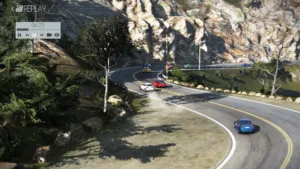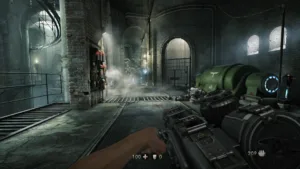As part of a regular feature for BabelTechReviews, this evaluation will compare the performance of 33 PC games using the Radeon WHQL Omega driver that we tested the R9 290X with when the TITAN X was launched, compared with the Beta 15.4 driver which was released for GTA V and also encompassed by Beta 15.4.1, released May 8, which fixed some issues with FreeSync.
 This driver performance analysis only features AMD’s top single-GPU flagship Radeon R9 290X although we plan to regularly test lesser cards also for upcoming evaluations. We want to at least document the performance changes of this beta driver set even though we are only testing one video card. We are going to give you the performance results of the R9 290X at 1920×1080, 2560×1600, and at 3840×2160 using 33 games. This driver mini-performance evaluation will give a natural comparison between the performance changes since AMD’s last WHQL driver set and the very latest beta driver.
This driver performance analysis only features AMD’s top single-GPU flagship Radeon R9 290X although we plan to regularly test lesser cards also for upcoming evaluations. We want to at least document the performance changes of this beta driver set even though we are only testing one video card. We are going to give you the performance results of the R9 290X at 1920×1080, 2560×1600, and at 3840×2160 using 33 games. This driver mini-performance evaluation will give a natural comparison between the performance changes since AMD’s last WHQL driver set and the very latest beta driver.
We are going to test the older Catalyst WHQL Omega versus 15.4.1 Beta using our current benchmark suite of 33 games plus 2 synthetic benchmarks. Our testing platform is Windows 8.1 64-bit, using an Intel Core i7-4790K at 4.00GHz which turbos to 4.4GHz for all cores, an ASUS Z97E motherboard, and 16GB of Kingston “Beast” HyperX RAM at 2133MHz. The settings and hardware are identical except for the drivers being tested.
At R9 280X and above, we test at higher settings and at higher resolutions generally than we test midrange and lower-end cards. All of our games are now tested at three resolutions: 3840×2160, 2560×1600 and 1920×1080 at 60Hz; and we use DX11/10/10.1 whenever possible with a very strong emphasis on the latest DX11 games.
Several games have had updates which have changed our settings. It appears that Far Cry 4 and Assassin’s Creed: Unity have recently patched in more demanding settings and we retested them with the older drivers for a more fair comparison. We even looked at 290X performance in GTA V, Wolfenstein: The New Blood, & Project Cars, although we did not test them with the older Omega drivers. We will also give you a comparison between the GTX 980 using its latest drivers versus the R9 290X using its latest driver.
Let’s get right to the test configuration, the driver release notes, and then to the results.
Test Configuration & Driver Release Notes
Test Configuration – Hardware
- Intel Core i7-4790K (reference 4.0GHz, HyperThreading and Turbo boost is on to 4.4GHz; DX11 CPU graphics), supplied by Intel.
- ASUS Z97-E motherboard (Intel Z97 chipset, latest BIOS, PCOe 3.0 specification, CrossFire/SLI 8x+8x)
- Kingston 16 GB HyperX Beast DDR3 RAM (2×8 GB, dual-channel at 2133MHz, supplied by Kingston)
- GeForce GTX 980, 4GB reference clocks, supplied by Nvidia
- PowerColor R9 290X PCS+, 3GB at reference speeds and clocks.
- Two 2TB Toshiba 7200 rpm HDDs
- EVGA 1000G 1000W power supply unit
- Cooler Master 2.0 Seidon, supplied by Cooler Master
- Onboard Realtek Audio
- Genius SP-D150 speakers, supplied by Genius
- Thermaltake Overseer RX-I full tower case, supplied by Thermaltake
- ASUS 12X Blu-ray writer
- Monoprice Crystal Pro 4K
Test Configuration – Software
- WHQL Omega Catalyst driver and 15.4.1 Beta drivers. High Quality; all optimizations off, use Application settings.
- Nvidia GeForce 350.12 WHQL drivers for the GTX 980. High Quality, prefer maximum performance, single display.
- VSync is off in the control panels.
- AA enabled as noted in games; all in-game settings are specified with 16xAF always applied; 16xAF forced in control panel for Crysis.
- All results show average frame rates except as noted.
- Highest quality sound (stereo) used in all games.
- Windows 8.1 64, all DX10 titles were run under DX10 render paths; DX11 titles under DX11 render paths. Latest DirectX
- All games are patched to their latest versions
The 33 Game benchmarks & 2 synthetic tests
- Synthetic
- Firestrike – Basic & Extreme
- Heaven 4.0
-
DX9
- The Witcher 2
-
DX10
- Crysis
-
DX11
- STALKER, Call of Pripyat
- Max Payne 3
- the Secret World
- Sleeping Dogs
- Hitman: Absolution
- Tomb Raider: 2013
- Crysis 3
- BioShock: Infinite
- Metro: Last Light Redux (2014)
- Battlefield 4
- Splinter Cell: Blacklist
- ArmA 3
- Batman: Arkham Origins
- Thief
- Sniper Elite 3
- Watch_Dogs
- GRID: Autosport
- Middle Earth: Shadows of Mordor
- Alien Isolation
- Assassin’s Creed Unity
- Civilization Beyond Earth
- Call of Duty: Advanced Warfare
- Far Cry 4
- Dragon’s Age: Inquisition
- Metal Gear Solid V: Ground Zeroes
- The Crew
- Evolve
- Total War: Attila
- Grand Theft Auto V
- Wolfenstein: The Old Blood
- Project CARS
Since GTA V is a new benchmark for BTR, the settings we use are completely maxed-out Ultra (including Grass), with every setting on and at highest, except for 2xMSAA Reflections and “Softest Shadows”. We use FXAA but no MSAA. Wolfenstein: The Old Blood is more demanding than earlier Wolfenstein games, but requires that testing take place below the engine’s 60 fps cap so we use completely maxed out ultra settings with 8xMSAA. And for ProjectCARS, we use the most demanding settings, including High AA and Ultra SMAA.
Lets look at AMD’s release highlights regarding the Catalyst 15.4 driver before we head to performance testing. Please also see the Catalyst 15.4.1 Release Notes and you can choose your download from the links provided by AMD.
Release Notes Highlights for Catalyst 15.4 Beta
This is a really short list highlighting the fact that AMD’s Beta Catalyst 15.4 beta driver was especially released for GTA V. And 15.4.1 appears to just be a bug fix for FreeSync
AMD Catalyst™ 15.4 Beta for Windows® – Grand Theft Auto V Optimized
This release enables peak driver performance optimization for AMD Radeon™ graphics users in Grand Theft Auto V.
This article provides information on the latest posting of the AMD Catalyst™ Software Suite, AMD Catalyst™ 15.4 Beta.
This particular software suite updates the AMD Catalyst Display Driver and the AMD Catalyst Control Center. This unified driver has been updated, and is designed to provide enhanced performance and reliability.
Package Contents
The AMD Catalyst™ Software Suite, AMD Catalyst™ 15.4 Beta contains the following:
- AMD Catalyst™ Display Driver version 14.502.1014
The AMD Catalyst™ 15.4 Beta Driver can be downloaded from the following links:
Let’s head to the charts and compare the driver progress from the Omega WHQL Catalyst driver to 15.4.1 Beta, and with the GTX 980 since we tested them last time.
Benchmarks & Performance Analysis
Here are our results of thirty-three games and 2 synthetics compared between the older WHQL Omega drivers, and Catalyst 15.4.1 beta drivers using the R9 290X. Each set of drivers are compared against the other in the two results column and the higher performance number is in bold. If there is a tie, both results are given in bold type. The third column represents the GTX 980 performance using the latest WHQL GeForce Driver compared with the R9 290X.
We note some a few performance improvements with AMD’s new Catalyst 15.4 Beta over the older Omega drivers in only a few games for the 290X.
Conclusion:
 So far, we would recommend upgrading to the latest Catalyst Beta driver because there are generally incremental advantages, and no large performance-impacting negatives that we have encountered. It is also the driver to use for the latest really fun games that we are playing including GTA V, Wolfenstein: The Old Blood, and ProjectCARS.
So far, we would recommend upgrading to the latest Catalyst Beta driver because there are generally incremental advantages, and no large performance-impacting negatives that we have encountered. It is also the driver to use for the latest really fun games that we are playing including GTA V, Wolfenstein: The Old Blood, and ProjectCARS.
Stay tuned, next up we are benching for a TITAN X versus CrossFire versus SLI Showdown. We are also writing our long-delayed HyperX Cloud gaming headset review right now for publication before this weekend.
Happy gaming!